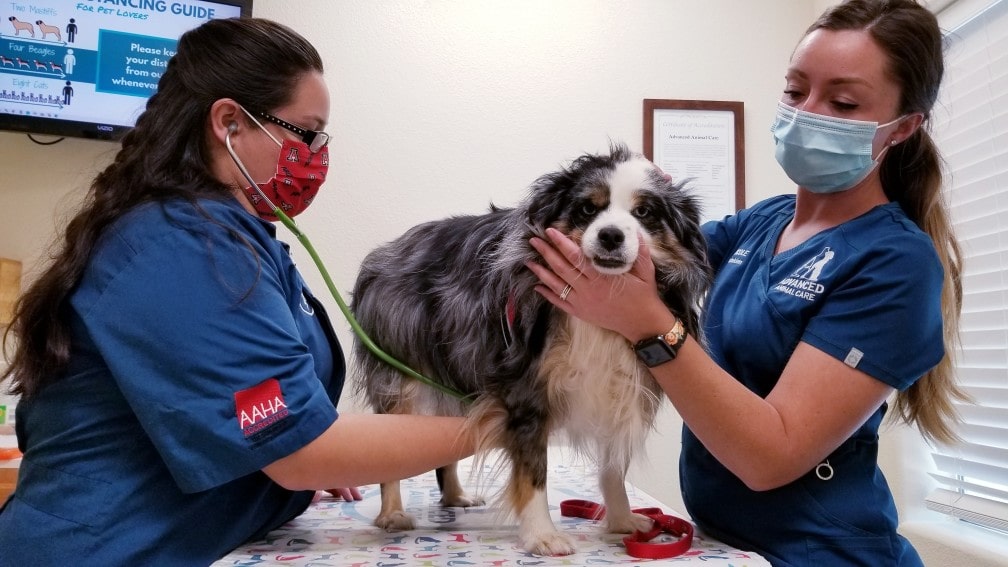Perhaps no dog parent wants their babies to suffer from cancer. No matter what type it is, cancer is a scary proposition, but the thing with bone cancer is that it is severe and equally painful. The thing is that there is nothing called a good kind of cancer.
However, osteosarcoma is one of the most aggressive ones in this case. The thing with this particular disease is that it is rare among dogs. However, you’ll need veterinary action if and when it strikes.
What is osteosarcoma?
Osteosarcoma is an aggressive and malignant tumor. It is the skeletal system of a dog, other animals, and humans. It frequently develops in the long bones of their limbs, especially the following:
- humerus
- radius
- femur
- tibia
However, it can also affect the other bones of their bodies, such as the following:
- jaw
- skull
- spine
- pelvis
- ribcage
The thing with osteosarcoma is that it tends to grow at a rapid rate, and this causes the destruction of their bones that leads to symptoms such as the following:
- severe pain
- instability
- fractures
Apart from this, you have extra-skeletal osteosarcoma, which is a rare form of the tumor that affects soft tissue sites such as the following:
- mammary glands
- liver
- kidneys
- spleen
It happens to be the most common form of bone cancer seen in dogs. Following are the rarer examples of bone tumors in dogs:
- chondrosarcoma
- fibrosarcoma
- hemangiosarcoma
From an overall perspective, it is uncommon for dogs to suffer from bone cancer, which is even less frequent among humans.
What are the causes of osteosarcoma?
Scientists are still determining the reasons why osteosarcoma develops. For that matter, they are not sure about many other kinds of cancer too. However, there seems to be a genetic component in this case. While this kind of cancer can affect all breeds, it’s almost every day in giant and large dog breeds such as the following:
- Great Dane
- Scottish Deerhound
- Irish Wolfhound
- Saint Bernard
- Rottweiler
- Boxer
- Doberman Pinscher
- German Shepherd
- Golden Retriever
- Great Pyrenees
- Greyhound
- Irish Setter
- Labrador Retriever
- Weimaraner
This form of cancer happens mostly to seniors and middle-aged dogs, but this does not mean younger dogs cannot be affected.
What are the symptoms of osteosarcoma?
Bone cancer is painful. The first sign that a dog may suffer from osteosarcoma is that they tend to suffer from sudden pain in the affected area. If it is a limb, the dog might start limping and hold up the leg that is paining so much! This limping could come and go in the initial stages.
It may lead their human parents to think that it is a minor issue such as a strain or a sprain. However, like a minor injury, the pain, in this case, does not go away with medications and rest.
You will see swelling in the affected area as the tumor grows. The pain would worsen with time, and the bone could break. Following are some other symptoms of such disease in a dog:
- respiratory distress
- lump or mass on their bodies
- discharge from nose
- loss of appetite
- weakness or lethargy
How is it diagnosed?
As we have said, a dog suffering from this disease will experience swelling or lameness in the affected area. At times, it could be both of them at the same time. Your veterinarian could be alerted to the possibility of the disease with bone radiographs. However, the following could also mimic the appearance of osteosarcoma:
- fungal or bacterial bone infections
- bone injuries
- other kinds of tumors
Osteosarcoma has substantial potential for metastasis. It is the reason the following diagnostic tests are suggested in these cases:
- lung radiograph
- scintigraphy or bone scan
- abdominal ultrasound
- blood work
- urinalysis
- MRI (magnetic resonance imaging) or CT (computed tomography)
How does this form of cancer usually progress?
As we have said already, this is an aggressive form of cancer, especially when it happens to dogs. When diagnosed, 90-95% of the dogs would have micro-metastasis, meaning the cancer cells have spread elsewhere in the body even when they cannot be detected.
Therefore, for dogs with osteosarcoma, staging is always recommended. Staging can be defined as the process where doctors search for potential locations in the body where the disease has spread.
How can osteosarcoma in dogs be treated?
The thing with osteosarcoma is that it has a wide range of treatment options, and the method followed in the case of a dog depends on the diagnosis. Following are the three main ways in which such cancer can be treated in dogs:
- amputation
- limb-sparing surgery
- stereotactic radiation
Amputation is an ideal way to treat osteosarcoma in dogs because the tumors here are aggressive. Currently, the affected limb is amputated and followed by chemotherapy so metastasis can be treated.
Finally, in limb-sparing surgery, the cancer is eliminated, and the affected bone is replaced by another bone which could be taken from a bone bank or your dog.
How long can dogs live if they have osteosarcoma?
The life expectancy of a dog suffering from osteosarcoma depends on how far the cancer has spread in its body. The sad thing is that if the dogs are not treated after contracting this disease, they will die within a few months.
However, treatment could extend their life by at least a year. The thing with such situations is that each case is unique, and your vet would guide you in caring for and treating your dog.
Read Also: Understanding Canine Constipation: Causes, Diagnosis, and Effective Treatment
When should you take your dog to see the vet?
Bone cancer is a highly aggressive disease and tends to spread at a quick rate. Hence, urgent treatment is required in these cases. If your dog shows any signs of the disease, you must call the vet immediately and book an emergency appointment. As a dog parent, you must take this disease with all seriousness.
How can you help your dog recover from osteosarcoma and manage it in them?
The prognosis and management of osteosarcoma in a dog would depend on the specific treatment plan created for them. If the affected limb is amputated, it would only provide them with short-term relief.
In most cases, dogs with distant metastasis die within months; in 10% of cases, they survive for a year. Combining chemotherapy and amputation can take up the survival time to almost a year following diagnosis. In these cases, 20% of dogs live for over two years.
Conclusion
So, as you can see, canine osteosarcoma is a massively painful condition with a poor prognosis, provided you are not treating your dog immediately. Therefore, you must discuss all the options available in this case with your vet – the discussion needs to be comprehensive. When you equip yourself with knowledge regarding the condition, you can make the best decisions for your furball in these cases.
FAQs
What to expect with osteosarcoma in dogs?
Osteosarcoma is a painful situation. If a dog has appendicular osteosarcoma or osteosarcoma of the limb, it would have a distinct swelling over there, lameness, or both. They would be more lethargic and lose their appetite.
How long do dogs live after being diagnosed with osteosarcoma?
If your dog is left untreated for the condition, it will not survive over two months. The survival period is determined by the discomfort and pain that the primary tumor is causing.
How quickly does osteosarcoma progress in dogs?
Osteosarcoma in dogs develops deep in their bones and becomes progressively more painful as it makes its way outwards. It destroys the bone from the inside out within 1-3 months.
Can a dog survive osteosarcoma?
The thing with osteosarcoma in dogs is that you cannot cure it – at least, that is how it happens to be. However, you can treat it with early detection being the key.
How do you comfort a dog with osteosarcoma?
If a dog suffers from bone cancer, their activity would be limited, so parents need to spend a lot of time by their sides, cuddling with them and comforting them.

 DogExpress
DogExpress






















 in Chandigarh, India.
in Chandigarh, India. 
